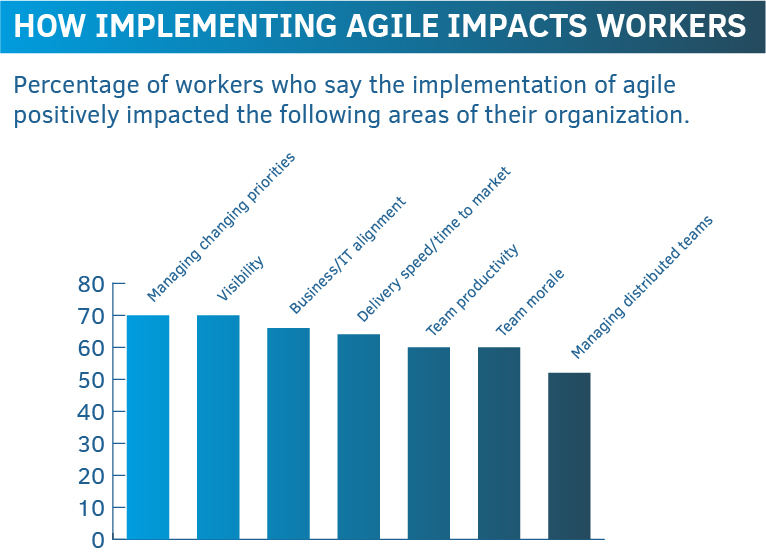Learn about purchasing for teams
4 Things Agile Practitioners Need to Know From the Agile Business Report

The London Times recently released an Agile Business Report that illustrates the state of agility across industries, discusses how to equip changemakers for real-world agility, and highlights data from the State of Agile Report, The Business Agility Report, and other sources in an intriguing infographic. We know you're busy transforming the world of work, so we dove into the 13-page report to uncover the information that matters most to product owners, scrum masters, and other agile practitioners. Read on to discover the four key takeaways from the Agile Business Report and learn why they matter to changemakers like you.
1. Agility is not just for start-ups and tech companies
The report explores real-world agile applications across multiple industries that don’t traditionally subscribe to agile methodologies like Consumer Packaged Goods (Unilever for example), International Aid (World Health and USAID), and space travel (SpaceX). The need for companies to respond to rapid change and increase their speed to market is nothing new. But with supply chain issues and the recent pandemic, many old-school industries are finally ready to start inspecting and adapting.
What does this mean for you? Now may be a great time to level up your agile certifications and emphasize agile and scrum proficiencies such as t-shaped skills in your next interview or performance review.
Related Article: Using Agile to Build Your Career & Stay Relevant in an Ever-Changing Job Market
2. According to the data, agile companies are good places to work
At Scrum Alliance, we believe that an agile way of working is a better way of working and the data from the report backs this up in multiple ways. According to the infographic, employees of agile companies feel more valued by their organization, experience greater recognition for their contributions, and feel safe to openly learn from their mistakes.

What does that mean for you? If you aren’t happy in your current company, it may be time to look for a job in a more agile organization. Wondering how you can tell if a company is truly agile? Here are 5 questions to help you decide if a company is a company’s culture is agile.
3. Got an idea to improve your organization? Today is a great day to speak up
In addition to agile adaptation in multiple industries, companies who have embraced agile are leaning into the practice and seeing great results. As leaders adjust to the practice of servant leadership, they’re beginning to focus on empowering teams and listening to solutions outside of the c-suite.
The report states, “Under an agile leadership model, staff are encouraged to share ideas and experiment. Communication is transparent and employees have the information they need to make quick decisions with confidence. This minimizes the bureaucratic roadblocks that stifle creativity.” According to the data, 85% of employees in agile organizations state that they are able to put the best ideas into action.
What does this mean for you? Simply put, you can be an agile leader in any role. It’s time to speak up and share your great ideas.
4. Now is a great time to break into an agile role
In the article, “Aptitude and Autonomy: How to Build an Agile Workforce”, the author details the growing demand for agile workers. She claims that organizations are desperate to find “quick-thinking, autonomous go-getters who are completely at ease with agile practices”.
According to research from Microsoft, nearly 41% of global workers will consider leaving their current jobs in the coming months. While the so-called “great resignation” presents companies with obstacles, it also opens doors for those looking to break into an agile role. As Paul Chapman, sales director at software firm Endava, puts it: “Hard skills can often be taught, fresh perspectives can be a compelling addition to your company. By prioritizing character and lived experiences among employees, agile companies can attract people they previously might not have, who can add real value to the company’s ability to deliver meaningful solutions.”
What does this mean for you? If you're looking to break into an agile role, start by emphasizing soft skills and your ability to apply agile principles outside of work.
Related Article: 3 Insights for Agile Leaders from the Agile Business Report
Want to dig deeper into the report? Download it here:











